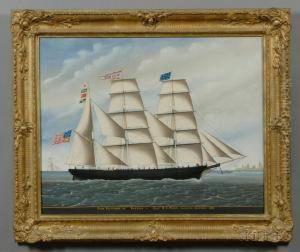Carolus L. Weyts Paintings
Carolus Ludovicus Weyts, often known simply as Carolus Weyts, was a Belgian painter born on August 18, 1808, in Antwerp. He is primarily recognized for his contributions to the genre of animal painting, which he often combined with landscape elements. During the 19th century, particularly within Belgian art circles, the portrayal of animals in their natural settings was a popular theme, and Weyts became one of the notable artists specializing in this field.
Weyts studied under the guidance of renowned artists at the Royal Academy of Fine Arts in Antwerp, an institution known for its influence on many prominent painters of the time. His style was influenced by the Flemish tradition, which is evident in his attention to detail and the naturalistic representation of his subjects. However, Weyts also showed an affinity for Romanticism, which can be seen in the atmospheric qualities of his landscapes and the emotive expressions of the animals he depicted.
Throughout his career, Carolus Weyts exhibited his work in various venues, both in Belgium and abroad. His paintings were well-received, and he garnered a reputation for his skillful brushwork and ability to capture the essence of the animals he painted. Weyts's artworks often featured domestic animals such as cows, sheep, and horses, which were typical subjects in the rural landscapes of Belgium.
Unfortunately, Weyts's life and career were cut short when he died on November 18, 1855, at the age of 47. Despite his relatively brief career, his contribution to Belgian art, particularly in the animal genre, was significant. His works continue to be appreciated for their charm and the insight they provide into 19th-century rural life. Weyts's paintings can be found in various art collections and have been the subject of study for those interested in Belgian art history and the development of animal painting as a genre.
